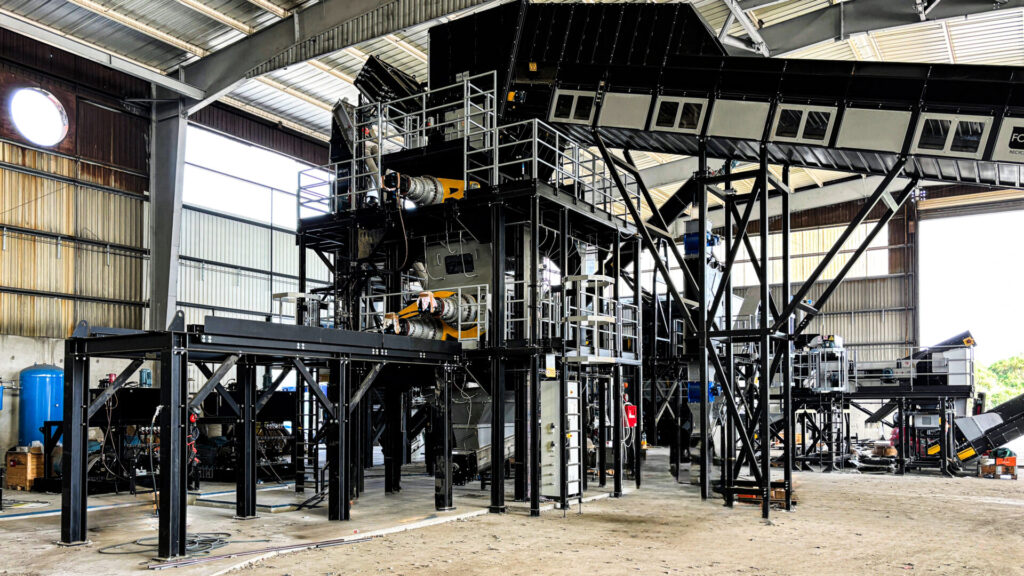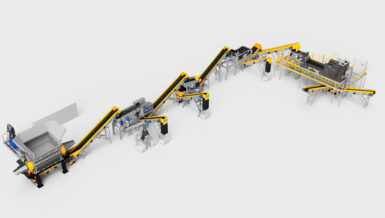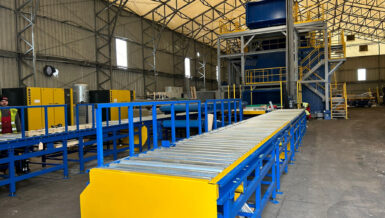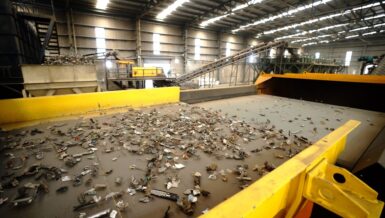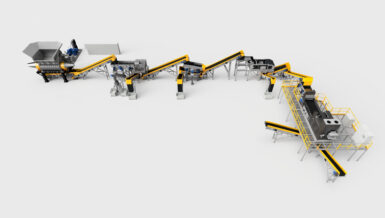In a dynamic context where the increasing complexity of waste demands ever more specialized solutions, FOR REC stands out as a leading force, driving the evolution of the sector through continuous investments in Research and Development.
In recent years, the company has turned market challenges into opportunities, developing cutting-edge technologies that not only meet current needs but anticipate future ones. In 2025, more than ever, FOR REC’s DNA — built on customized engineering and long-term vision — has materialized into groundbreaking projects that are redefining the treatment of complex waste and strengthening the transition toward a true circular economy.
New Frontiers in WEEE Treatment: Solutions for Boilers and Photovoltaic Panels
The end-of-life management of Waste Electrical and Electronic Equipment (WEEE) represents one of the most complex challenges in the recycling field. FOR REC has addressed this with two high-level innovations, designed to tackle specific issues through advanced engineering.
Building on its extensive experience in designing refrigerator recycling plants, FOR REC has developed the world’s first dedicated boiler treatment line, installed in France.
The plant was engineered to maximize the recovery of secondary raw materials and, above all, to safely manage hazardous gases.
The process begins with the draining of residual water from the boilers, which are then conveyed by a chain feeder to the shredding tower, consisting of a double-shaft shredder followed by a four-shaft shredder. This configuration ensures effective opening of the units and optimal size reduction for the subsequent processing stages.
The shredded material then enters a structured separation system: a vertical hopper initiates the selection, while magnetic separation removes the ferrous fractions, which are later refined by a Z15 hammer mill. The non-magnetic materials continue through several steps, including a nutational screen to separate limestone, an aerodynamic separator to divide the light fraction (polyurethane foams) from the heavy fraction (metals, plastics and stainless steel), and finally an eddy-current separator to distinguish copper and aluminum from plastics, stainless steel and cables.
This sequence ensures a high-precision separation and produces recyclable fractions with excellent purity levels.
The plant also features an advanced gas-management system, which captures CFCs released during processing. These gases are treated through an activated-carbon adsorption system, liquefied via cryogenic condensation, and stored in pressurized cylinders to ensure safe and compliant disposal.
Finally, the extracted insulating polyurethane is compressed and heated in a pelletizer, a process that allows residual gases to be removed. The material is then cooled and stored in big bags, ready for final disposal.
Through this structured and highly refined workflow, the plant is able to recover output materials of remarkably high purity, ready to be reintroduced into the circular economy or directed to specialized recycling streams.
Watch the full video showcasing the complete boiler treatment process here
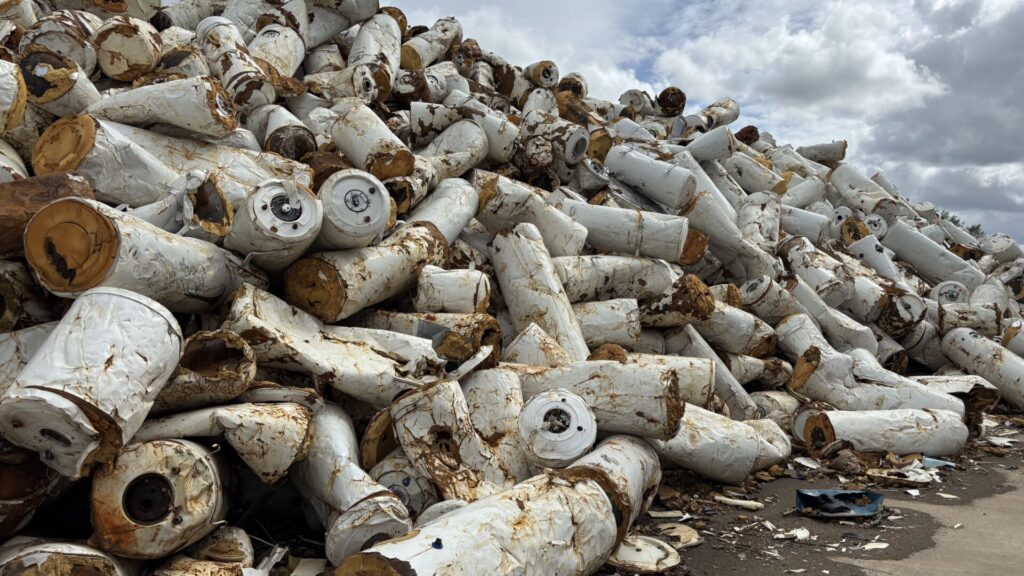

Another strong point is the advanced gas-handling system, which stores the extracted gases in cylinders for safe disposal. The polyurethane present inside the boilers is also managed through a dedicated process: compacted in a pelletizer and bagged for final disposal.
The plant, WEEELABEX-certified, includes remote control, integrated automation, advanced management of ozone-depleting gases and operates continuously 24/7.
At the same time, FOR REC has developed a dedicated plant for the recycling of photovoltaic panels, a rapidly growing need. According to IRENA, by 2050 around 80 million tons of panels will reach their end of life — an environmental challenge but also a major opportunity for the circular economy.
The new FOR REC plant begins the treatment process with an initial opening of the photovoltaic panel using a lacerator, which allows the structure to be properly broken and prepared for the next stages. The material then undergoes further size reduction through a four-shaft shredder, ensuring a uniform and controlled output. Once reduced, the material is refined in a vertical mill, which performs an additional cleaning and liberation of the different components. The process is completed with a series of advanced separation systems that isolate and purify each fraction, producing fully cleaned and recoverable materials ready to re-enter the recycling stream.
A strategic technology that supports a virtuous recycling supply chain, perfectly aligned with the principles of the energy transition.
Innovation You Can Touch: The New Cable Recycling Plant
For FOR REC, innovation is not an abstract concept but a tangible experience. Proof of this is the recent installation — directly at the company’s headquarters — of a complete WEEE treatment plant with a specific focus on electrical cables.
This line acts as a real demonstration laboratory. Customers can bring samples of their own materials, observe the entire process in real time and verify the plant’s efficiency firsthand.
At the end, they receive samples of highly pure granules — clear, physical proof of the system’s performance.
A transparent, hands-on and highly credible approach that eliminates uncertainty and demonstrates the superiority of FOR REC solutions directly in the field.
Ecomondo Preview: X3000TW, the Shredding Revolution
The peak of a year driven by innovation was the premiere presentation at Ecomondo 2025 of the new single-shaft primary shredder X3000TW, set to establish a new benchmark in the sector.
Its technological core consists of the latest-generation torque motors, offering previously unimaginable advantages:
- precise and instantaneous control of rotor rotation;
- continuous optimization of delivered power;
- significant energy savings;
- the ability to process even the toughest materials under load;
- unlimited rotor inversion frequency, eliminating downtime;
- maximum reliability even in extreme temperature or dust conditions, thanks to a dedicated liquid-cooling system;
- reduced noise emissions and zero ordinary maintenance on propulsion components.
The result is a machine that combines exceptional performance with true operational sustainability.
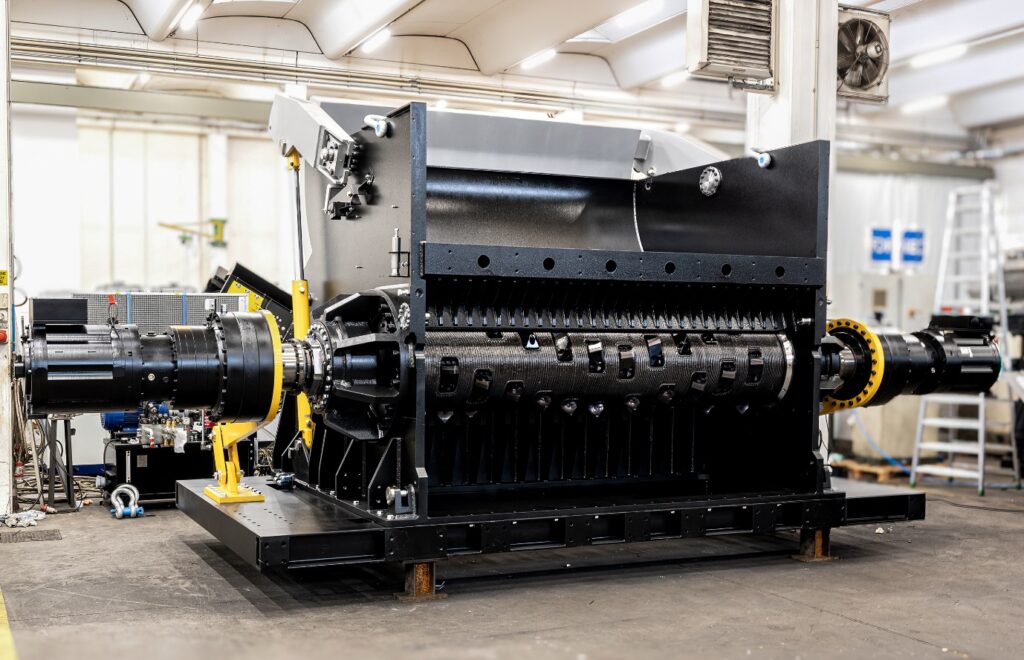
FOR REC’s 2025 demonstrates that the future of recycling is being built today — with vision, expertise, and the courage to innovate.
The technologies developed this year mark a decisive step toward a more sustainable, efficient, and forward-looking industrial model, ready to meet — and anticipate — the needs of a changing world.

